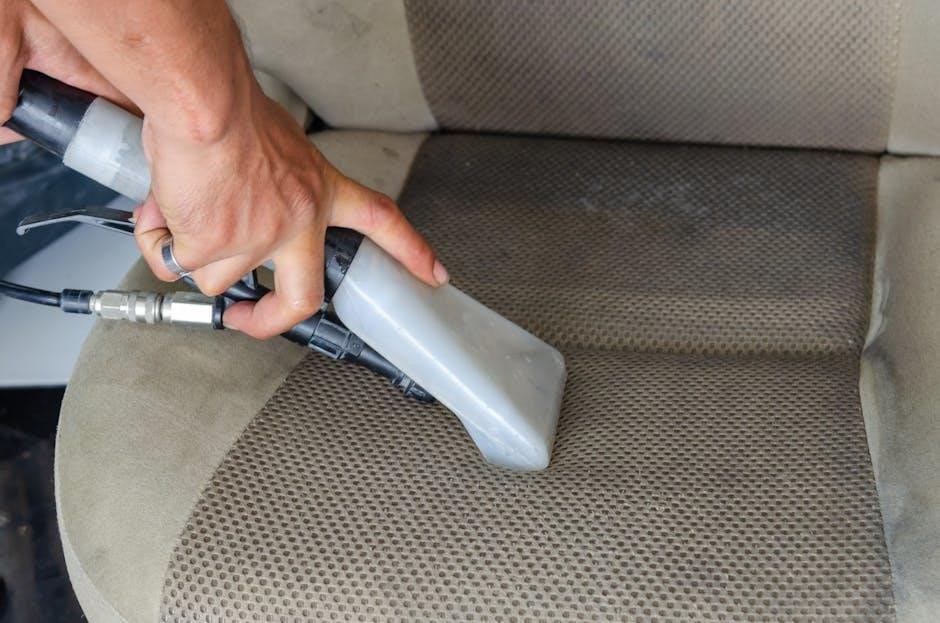Beam Central Vacuum Systems: A Comprehensive Guide
Welcome to a comprehensive exploration of Beam Central Vacuum Systems! This guide will provide a detailed walkthrough of Beam system manuals, offering essential information for owners and prospective buyers. Accessing and understanding your Beam system’s manual is crucial for optimal performance and longevity.
Beam Central Vacuum Systems offer a built-in cleaning solution designed for whole-home convenience. Unlike traditional portable vacuums, a Beam system consists of a central power unit, typically located in a garage or basement, connected to wall inlets throughout the house. This design eliminates the need to lug a heavy vacuum from room to room, reduces noise during cleaning, and often provides more powerful suction.
The core benefit of a Beam system lies in its ability to exhaust dirt, dust, and allergens out of the living area, contributing to improved indoor air quality. Many models also incorporate features like system performance monitoring and error code displays for easy troubleshooting. To fully leverage these benefits, understanding the system’s operation through the owner’s manual is paramount.

Beam has been a prominent player in the central vacuum market since 1957, offering a range of models to suit various home sizes and cleaning needs. This comprehensive guide will help you navigate the essentials of Beam Central Vacuum Systems, with a particular focus on understanding and utilizing the system’s manual for optimal performance and maintenance.

Understanding the Beam System Components
A Beam Central Vacuum System comprises several key components working in harmony. The power unit, typically housed in a utility area, generates the suction. Understanding its voltage and current draw, as detailed in the manual, is crucial for safe operation. Inlet valves, strategically placed throughout the home, connect to the central vacuum via a network of PVC piping. The manual provides guidance on proper piping installation and maintenance to prevent clogs.
The hose, usually lightweight and flexible, attaches to the inlet valve, allowing for easy maneuverability. Various attachments, such as power brushes, nozzles, and wands, enhance cleaning versatility. The dirt receptacle, located in the power unit, collects the vacuumed debris. Monitoring its fill level, as indicated in the manual, prevents overfilling and maintains optimal suction. Some models also feature filters to further purify the exhaust air.
Consulting the owner’s manual is essential for identifying specific components in your Beam system model and understanding their individual functions. The manual also provides crucial information regarding compatibility of accessories and replacement parts, ensuring proper maintenance and extending the lifespan of your Beam central vacuum system. Familiarizing yourself with these components will aid in troubleshooting and efficient operation.
Beam Central Vacuum System Installation Guide
Installing a Beam Central Vacuum System requires careful planning and adherence to the manufacturer’s instructions; The first step involves choosing the right system based on your home’s size and layout. The Beam system manual provides guidance on selecting an appropriate power unit and determining the number of inlet valves needed.
Next, plan the layout of the PVC piping network. The manual offers detailed diagrams and instructions for routing the pipes through walls, floors, and ceilings, minimizing bends and ensuring proper airflow. Accurate measurements and the use of a pipe cutter or hacksaw with a miter box are essential for precise cuts.
Install the inlet valves at strategic locations throughout your home, following the manual’s instructions for securing them to the wall studs. Connect the PVC pipes to the inlet valves and power unit, ensuring airtight seals. Finally, connect the power unit to a dedicated electrical circuit, adhering to all safety precautions outlined in the manual. Remember to consult the manual for specific wiring instructions and grounding requirements. Consulting a qualified electrician is highly recommended for electrical connections. Prior to full operation, test the system to ensure proper suction at each inlet valve. The manual provides troubleshooting tips for addressing any issues encountered during installation.
Troubleshooting Common Beam System Problems
Even with proper installation and maintenance, Beam Central Vacuum Systems may experience occasional issues. Consulting the system manual is the first step in diagnosing and resolving these problems. A common issue is reduced suction, which can be caused by a clogged hose, a full dirt receptacle, or a blockage in the PVC piping.
The manual provides instructions for checking and clearing these obstructions. If the system suddenly stops working, check the power supply and the circuit breaker. Overheating can also trigger a thermal overload, causing the system to shut down. Allow the unit to cool down before attempting to restart it. For systems with UV sanitization or other features, refer to the user manual for specific troubleshooting steps.
Another common problem is unusual noises during operation. These noises could indicate a loose connection, a damaged motor, or debris caught in the fan. The manual offers guidance on identifying the source of the noise and taking appropriate corrective actions. If the problem persists, contacting a qualified Beam service technician is recommended. The system manual often includes a list of authorized service providers in your area. Regular maintenance, as outlined in the manual, can help prevent many of these problems from occurring in the first place.
Maintenance of Beam Central Vacuum Systems
Proper maintenance is crucial for prolonging the life and optimizing the performance of your Beam Central Vacuum System. The system manual provides detailed instructions for routine maintenance tasks. Regularly emptying the dirt receptacle is essential to prevent clogs and maintain optimal suction power. The frequency of emptying depends on usage but should be done at least every few months.

Check the hoses and attachments for any signs of wear and tear, such as cracks or leaks. Replace damaged components promptly to prevent performance degradation. Inspect the filters regularly, cleaning or replacing them as needed. Clean filters ensure efficient airflow and prevent dust from recirculating into your home. The manual specifies the type of filters used in your system and provides instructions for their maintenance.
Periodically inspect the inlet valves for any obstructions or damage. Ensure that the valves are properly sealed when not in use to maintain consistent suction throughout the system. For models with UV sanitization systems or other advanced features, consult the user manual for specific maintenance guidelines. Following the recommended maintenance schedule outlined in the manual will help you avoid costly repairs and keep your Beam Central Vacuum System running smoothly for years to come.
Beam System Operating Instructions

Operating your Beam Central Vacuum System is straightforward, but consulting the system manual is essential for understanding specific features and safety precautions. To begin, ensure the power unit is properly connected to a power source. Locate the inlet valves in the rooms you wish to clean. Open the valve and insert the hose securely until it clicks into place. The system should automatically activate when the hose is connected.
Use the wand and attachments to clean various surfaces, adjusting the suction power as needed. Many Beam systems offer variable speed settings, allowing you to customize the cleaning intensity for different floor types and upholstery. Refer to the manual for guidance on selecting the appropriate settings. When finished, remove the hose from the inlet valve. The system should automatically shut off.
For systems with a power brush, ensure the brush is properly attached and functioning correctly. The manual provides instructions for operating and maintaining the power brush. Always unplug the power unit before performing any maintenance or troubleshooting. Familiarize yourself with the location of the on/off switch and any reset buttons. The manual includes detailed diagrams and explanations to help you understand all the system’s functions. Following these operating instructions will ensure efficient and safe use of your Beam Central Vacuum System.
Exploring Beam System Accessories
Beam Central Vacuum Systems offer a wide array of accessories designed to enhance cleaning performance and versatility. Consulting your system manual is crucial for identifying compatible accessories and understanding their specific uses. Common accessories include various brush attachments, such as the dusting brush, crevice tool, and upholstery brush. These attachments are designed for cleaning different surfaces and reaching tight spaces.
The manual also details the use of extension wands, which provide extra reach for cleaning ceilings, curtains, and other high areas. Power brushes, also known as powerheads, are another popular accessory. The Electrolux Rugmaster BM1393 is a well-regarded option; These brushes feature a motorized brush roll that agitates carpets and rugs for a deeper clean.
Hose options are also important to consider. Beam offers lightweight and flexible hoses in various lengths. Some hoses feature a switch that allows you to control the power unit directly from the handle. Specialty accessories, such as pet grooming tools and car cleaning kits, are also available. The manual provides instructions for attaching and using each accessory, ensuring optimal performance and preventing damage to your system or surfaces. Reviewing the accessories section of your Beam system manual will help you maximize the cleaning capabilities of your central vacuum.
Beam Central Vacuum System Performance Monitoring
Monitoring the performance of your Beam Central Vacuum System is crucial for maintaining its efficiency and preventing potential problems. Your system manual provides valuable insights into key performance indicators and how to interpret them. One critical aspect is monitoring airflow, as reduced airflow can indicate a blockage or a full dirt receptacle. The manual often includes instructions on how to check for obstructions in the hose, pipes, and inlet valves.
Many Beam systems feature indicator lights or displays that provide real-time feedback on system performance. For example, the Beam Alliance series includes an LED icon chart that indicates the system’s status. The manual explains the meaning of each icon and what actions to take if a warning light illuminates. Some systems also monitor AC voltage, current draw, and circuit board temperature, providing additional insights into the system’s overall health.
Regularly checking the dirt receptacle level is also essential. An overfull receptacle can reduce suction power and potentially damage the motor. The manual specifies the recommended frequency for emptying the receptacle and provides instructions on how to do so properly. By following the performance monitoring guidelines in your Beam system manual, you can ensure that your central vacuum operates at peak efficiency and enjoys a long service life.
Beam Central Vacuum System Error Codes and Solutions

When your Beam Central Vacuum System encounters an issue, it may display an error code to help you diagnose the problem. Your system manual is the primary resource for understanding these error codes and implementing appropriate solutions. Error codes can indicate a wide range of issues, from simple problems like a full dirt receptacle to more complex issues with the motor or electrical components.
The manual typically includes a comprehensive list of error codes, along with detailed descriptions of the potential causes and recommended solutions. For example, an error code might indicate an overheating motor, which could be caused by a blockage in the system or a malfunctioning fan. The manual would then provide step-by-step instructions on how to troubleshoot the issue, such as checking for obstructions, cleaning the motor housing, or replacing a faulty component.
In some cases, the solution may be as simple as resetting the system or emptying the dirt receptacle. However, other error codes may require more advanced troubleshooting or professional assistance. The manual will guide you through the appropriate steps to take, depending on the severity of the issue. It’s crucial to consult your Beam system manual before attempting any repairs to avoid further damage or injury. If you’re unsure about any troubleshooting steps, contact a qualified Beam service technician.

Safety Precautions for Beam Central Vacuum Systems

Operating a Beam Central Vacuum System safely is paramount. Consult the safety section of your Beam system manual before installation, operation, or maintenance. This section outlines critical precautions to minimize risks of electric shock, fire, or personal injury. Always disconnect the power unit from the electrical outlet before performing any maintenance or troubleshooting.
Never operate the system outdoors or on wet surfaces to prevent electric shock hazards. Avoid vacuuming flammable or combustible liquids, such as gasoline or kerosene, as these can create explosive atmospheres. Keep the hose and attachments away from heat sources and sharp objects to prevent damage and potential hazards. When using the power brush, be cautious of loose clothing, hair, and jewelry to avoid entanglement.
Ensure that the electrical outlet is properly grounded and capable of handling the system’s power requirements. Do not use extension cords, as they can overheat and pose a fire risk. Regularly inspect the power cord for damage and replace it if necessary. Supervise children and pets when the system is in use and store attachments out of their reach. If you notice any unusual noises, smells, or smoke, immediately turn off the system and contact a qualified technician. Following these safety precautions will ensure a safe and enjoyable experience with your Beam Central Vacuum System.
Comparing Beam Systems to Other Brands
When considering a central vacuum system, it’s essential to compare Beam to other brands available in the market; Beam, manufactured by Electrolux Central Vacuum Systems since 1957, boasts a long-standing reputation for quality and innovation. However, brands like Cen-Tec Systems and others offer competitive alternatives. Key comparison factors include suction power, filtration efficiency, noise levels, and durability.
Beam systems often emphasize built-in convenience and energy efficiency, with features like ultra-energy-efficient motors and advanced filtration systems. Cen-Tec Systems, on the other hand, is known for its high-quality pipes, powerheads, and accessories. When comparing performance, consider the specific needs of your home and cleaning habits. Some brands may offer specialized features, such as UV sanitization systems or advanced error code monitoring.
Price is another critical factor. While Beam systems may offer premium features, other brands may provide more budget-friendly options. It’s also important to consider the availability of manuals, support resources, and local dealers for each brand. Ultimately, the best choice depends on your individual requirements and preferences. Researching and comparing the specifications, features, and customer reviews of different brands will help you make an informed decision.

Finding Beam System Manuals and Support Resources

Locating the correct manual and support resources for your Beam Central Vacuum System is essential for proper maintenance and troubleshooting. The primary source for manuals is often the manufacturer’s website, Electrolux Central Vacuum Systems, where you can typically find downloadable PDFs of owner’s manuals for various Beam models. These manuals contain crucial information regarding operation, maintenance, and safety precautions.
Your local Beam dealer is also an invaluable resource. Beam dealers are experts in installation, troubleshooting, and repair, and they can provide you with a physical copy of the manual or guide you to the appropriate online resources. Additionally, many online forums and communities dedicated to central vacuum systems can offer helpful tips and advice from other Beam users.
When searching online, be sure to specify your Beam model number to ensure you find the correct manual. Resources like Homesthetics and other online magazines may also offer guides and DIY tips related to Beam systems. If you encounter specific issues, consult the troubleshooting section of your manual or contact Beam customer support for assistance. Remember to keep your manual readily accessible for quick reference whenever needed.
